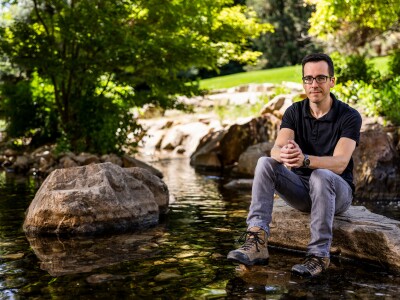Study findings have application for fog harvesting and diaper manufacturing

Ever wanted to know at what angle a bent fiber can hold the largest droplet of water? Then we have great news for you: A group of engineers and scientists from Utah State University, BYU and the University of Liege (Belgium) have figured it out.
The optimal angle, confirmed by both lab experiments and complicated mathematics, is 36 degrees. According to this group’s new study, published in Royal Society of Chemistry’s Soft Matter
Evidence of such madness can be observed in nature, where huge droplets of water attach to cypress tree leaf tips containing much more volume than the simple laws of physics suggest.

“We have discovered the angle of a bent fiber that will hold the greatest amount of fluid,” said co-author and BYU chemical engineering professor Bill Pitt. “The applications of this discovery are enormous – from applications in which you want to hold water, like in paper towels and baby diapers, to applications in which you don’t want to hold water, like drainage screens in fog collectors.”
Recently, a broad range of research has focused on the maximum volume of water a horizontal fiber could collect. Inspired by observations of huge droplets witnessed in nature, the USU-led team correctly hypothesized a bent, angled fiber would hold even more.
To test their theory, researchers built a rigid circular frame and strung nylon fibers from one side of the frame to the other. Next, they attached a very tiny fiber at the center and pulled the original horizontal fiber upward, forming an upside-down “V”. By varying the fiber attachment locations, they could change the angle formed between the two halves of the bent fiber.
Different types of liquids were applied to the bend in the fiber using a micro-pipette. The volume of the droplet increased incrementally until the droplet detached from the fiber. Such a simple experiment produced a very significant advancement in science.
Pitt helped formulate the mathematical model of the physics of what was happening with the liquids in the lab experiments. Pitt said there are additional applications from the study, such as improved humidification and evaporation processes in the chemical industry and better protective coverings for consumers, such as rain tarps at outdoor events.
Other researchers on the study include lead author Tadd Truscott, head of the USU Splash Lab, Zhao Pan of USU, and Floriane Weyer and Nicolas Vandewalle of the University of Liège.



